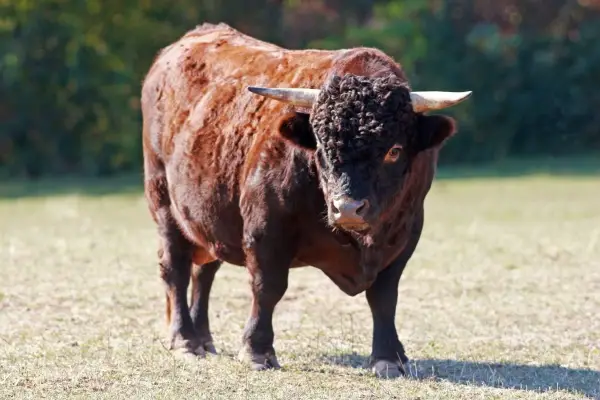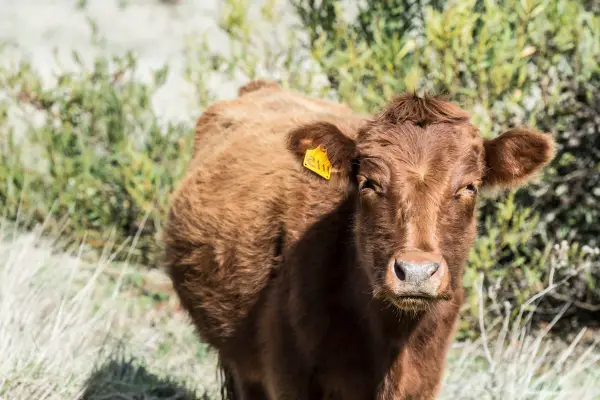Dexter Cattle
Dexter cattle are a popular small beef cattle breed known for their versatility, excellent marbled meat, and high yields on marginal pastures. They have a number of advantages as well as some disadvantages to consider when deciding if they are the right fit for your farm.
Origins and History of Dexter Cattle
Dexter cattle originated from southwestern Ireland in County Tipperary and County Kerry. They were first bred by small landholders in the early 1800’s who selected the best small dual-purpose cattle for milk and meat production on their limited land.
The breed is named after the village area on Cork’s south coast called “Dexter’s Ferry” which was a shipping port where cattle were exported to England. Dexters became quite popular in England as an easy-calving and hardy small cow.
They were first imported to the United States in 1905 to the state of Massachusetts. Their adaptable nature soon made them popular across the U.S. and Canada on homesteads and small beef operations.
Key Dexter Cattle Characteristics
Dexter cattle stand apart from other cattle breeds because of their small stature combined with some full-sized cattle characteristics.
Size: Dexter cows stand 36-44 inches tall and weigh up to 750 pounds. Their small size belies their hearty appetites and production ability.
Coloring: They have a short and thick coat that comes in black, red, or dun-colored.
Horns: Both cows and bulls have horns which are short and moderately thick emerging laterally.
Physical Features: Dexters have shorter legs in proportion to their body but longer bodies than other miniature cattle breeds. They also have small wedged-shaped heads and short, upright ears.
Temperament: Dexters are quite docile, calm by nature, and easy to handle making them suitable to new cattle owners.
Milking Ability: Dexter cows are used mainly for their meat but do produce moderate amounts of milk. On average they produce 2-3 gallons of milk per day when grass-fed only.
Carcass Yield: They are considered an excellent small beef breed because they have heavier muscling and marbling than other miniatures. Their meat is comparable to Angus or Herefords.
Hardiness: Dexters adapt well to various climates from cooler regions to hot humid areas. They utilize marginal pastures efficiently and have excellent reproductive rates.

Uses of Dexter Cattle in Farming
The dual-purpose Dexter was originally used for milk and meat by smallholders in Ireland. Today they are primarily raised for beef on homesteads and small farms due to their many advantages.
1. Homestead Cattle for Meat
On sustainable homesteads, Dexter cattle provide an excellent source of grass-fed and finished beef. Their smaller size makes them more economical to raise for a smaller family’s beef consumption. Dexters produce nicely marbled and tasty beef on mainly grass.
2. Crossbreeding for Organic Beef
For certified organic beef producers, Dexters make good cows for crossing with Red Angus or a larger beef breed. The half-Dexter offspring gain well on grass and produce well-marbled organic beef. Their efficient grazing makes them suitable for organic beef production.
3. Small-Scale Dairy Cattle
On a small acreage, Dexter cows can be kept for family milk production as well as beef. They produce a couple of gallons per day while grazing which is ample for family needs without intensive feeding. The resulting bull calves can begrass-finished for organic beef.
Advantages of Raising Dexter Cattle
For the hobby farmer or sustainable homesteader, Dexters offer many advantages that suit small acreages well.
1. More Cattle Per Acre
Due to their smaller land area needs and grazing efficiency, it’s possible to raise more Dexter cattle per acre compared to standard cattle sizes. Their lower feed requirements help increase stocking rates for optimal pasture utilization.
2. Greater Docility
Dexters have an innately pleasant, docile temperament. They are easier to handle than other heritage cattle allowing first-time cattle owners to adapt well.
3. Higher Feed Conversion Rates
Efficient digestion and metabolism allow Dexters to do more with lower-quality roughage. Their feed conversion rates are higher than larger cattle, making them economical grazers.
4. Lower Cost Inputs
With lower overall feed requirements and fewer expensive inputs needed for health, Dexters can be profitable on a smaller overall budget.
5. Abundant Marbled Meat
Dexters yield well-marbled beef like a full sized beef breed despite their smaller size. The pleasing taste and tenderness of their meat garners top prices.
Disadvantages of Dexter Cattle
While Dexters present numerous advantages over conventional cattle for small operations, there are a couple downsides to consider as well.
1. Lower Total Meat Yield
Due to their petite size, Dexters offer lower total beef poundage per animal versus other heritage breeds like Devons or Pineywoods that may reach 1,000 pounds. More cattle need to be finished to yield abundant beef.
2. Not Tall Enough for Fencing
Regular field fencing needs to be short enough for Dexters to easily put their head through the rungs. Special requirements are needed for paddock layouts and handling facilities.
3. Challenge of Finding Breeding Stock
Their popularity makes Dexter breeding stock highly sought after. It can be tricky finding local breeders compared to more common cattle breeds. Often breeders maintain waiting lists.
4. Susceptible to Extreme Heat
Breeders need to take extra care when heat waves hit to prevent heat stress in Dexters. Their black hide, thick skin and heavy coats can cause them to succumb to high temperatures. Providing shade and misters helps counteract heat waves.

What is the Typical Size of Dexter Cattle?
The average height of a Dexter cow is 36-44 inches at the shoulder. Cow weights range between 750-850 pounds with bulls ranging from under 1,000 pounds up to 1,200 pounds depending on genetics and nutrition.
Dexters are born small, with calves averaging 25-35 pounds at birth – smaller than most newborn calves. However, by 6 months old, Dexter calves catch up quickly and achieve good weaning weights of 300+ pounds.
Their petite size at maturity makes them about half the size of an average 1,500 pound beef cow. So Dexters are considered miniature cattle but they still yield well relative to their small size.
How Much Milk Do Dexter Cows Produce?
The typical amount of milk produced by a Dexter cow is 2-3 gallons of milk per day when grass-fed only. They can produce 4-6 gallons daily with extra high-quality feed and excellent pasture.
So Dexter’s milk output is less than a full-sized dairy cow but ample for family needs. The milk has higher butterfat, averaging 4% similar to Jersey cattle. Their milk yields a noticeably richer, creamier milk.
For homesteaders seeking both family milk and meat, Dexters fit the bill nicely. They give enough ample milk for family use and the calves finished for beef.
Tips for Raising Dexter Cattle
Succeeding with Dexters relies on giving them proper care matched to their petite size. Here are some top tips for raising them:
- Seek out breeding lines free of genetic defects with good confirmation and proven calving ease.
- Feed grass-fed diets for optimum health along with free choice loose minerals or salt licks.
- Monitor heat carefully for signs of stress and provide shade, misters to prevent overheating.
- Plan smaller sized handling chutes, trailers and pasture fencing to match their short height.
- Breed heifers early given the breed’s excellent calving ease traits.
- Castrate bull calves not selected for breeding by 3 months old for more tender beef.
- Wean calves gradually at 6-7 months old once they reach 300 pounds.
- Finish young grass fed steers and heifers at 18-24 months for premium dwarf Dexter beef.
Following these tips will lead to success with the hardy and helper Dexter cattle breed. Their pleasant disposition and lean tasty beef make them an excellent small farm cattle breed.
Final Words;
In summary, Dexter cattle offer numerous benefits as a small dual-purpose breed to consider. Originating from southwestern Ireland, Dexters make hardy, thrifty grazers that transform grass efficiently into rich milk and well-marbled beef. Their petite size belies their productivity, making them suitable for small farms with limited land resources.
Docile by nature, Dexters adapt readily to a range of climates and terrains. Homesteaders and sustainable farmers are finding their manageable size reduces costs of production while offering ample milk and meat for a small family’s needs. With plenty of tasty beef per animal and winning dispositions, Dexter cattle are truly the ideal small farm cattle breed worth further investigation.


